What is Blepharospasm?


2 types1
- Primary blepharospasm: no cause can be found through examination or diagnostic testing1
- Secondary blepharospasm: a cause is identified, which could include1:
- Exposure to a drug known to cause the condition
- Another disorder of which blepharospasm is a symptom
Symptoms1
- Excessive blinking
- Light sensitivity
- Watering eyes
- Dry eyes
- Eye irritation
Muscles involved2
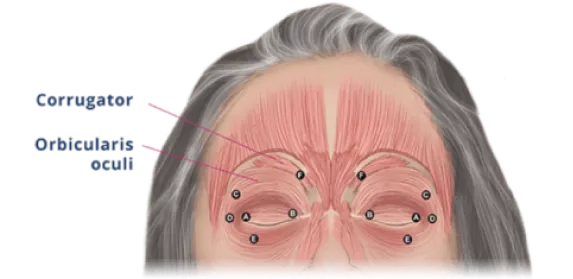
Legend
- A B Lateral and medial superior pretarsal part of the orbicularis oculi muscle
- C D Lateral canthus of the orbicularis oculi muscle
- E Inferolateral portion of the orbicularis oculi muscle
- F Corrugator muscle
References
1. Tsui JKC. Blepharospasm and hemifacial spasm. In: Brin MF, Comella CL, Jankovic J, eds. Dystonia: Etiology, Clinical Features, and Treatment. Philadelphia, PA: Lippincott Williams & Wilkins; 2004:151-157. 2. XEOMIN® [Package insert]. Raleigh, NC: Merz Pharmaceuticals, LLC; 2024
In clinical studies, XEOMIN demonstrated improvement in the symptoms of blepharospasm at 6 weeks after injection2
Blepharospasm in adults
XEOMIN for blepharospasm
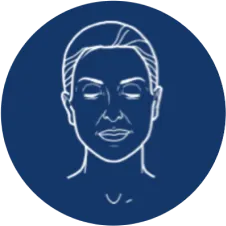
In adults with blepharospasm, nerve signals tell the muscles to contract when they shouldn’t. This can cause eyelid movement that leads to discomfort.1
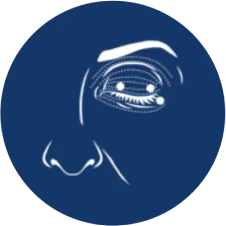
XEOMIN is injected into muscles to help interfere with these signals. This helps decrease eyelid spasms.2
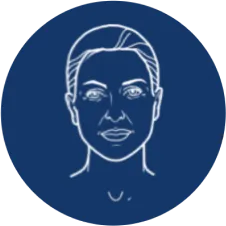
Some muscles may still contract, but less severely.
Images are for illustration purposes only. Individual results may vary
References
1. Blepharospasm. American Association of Neuromuscular & Electrodiagnostic Medicine website. https://www.aanem.org/Patients/Muscle-and-Nerve-Disorders/Blepharospasm. Accessed June 18, 2021. 2. XEOMIN® [Package insert]. Raleigh, NC: Merz Pharmaceuticals, LLC; 2024.
How does XEOMIN work?
XEOMIN may help reduce the symptoms of blepharospasm in adults, such as abnormal eyelid spasms.
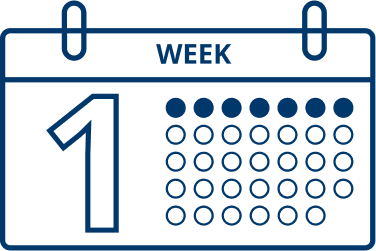
Patients typically start to see results one week after they start treatment with XEOMIN.
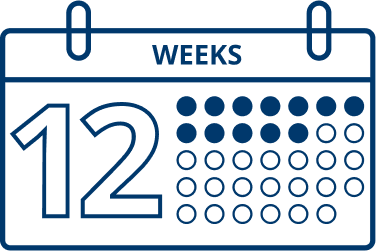
In clinical trials, most patients were retreated after 12 to 14 weeks.
XEOMIN is manufactured with purity in mind.
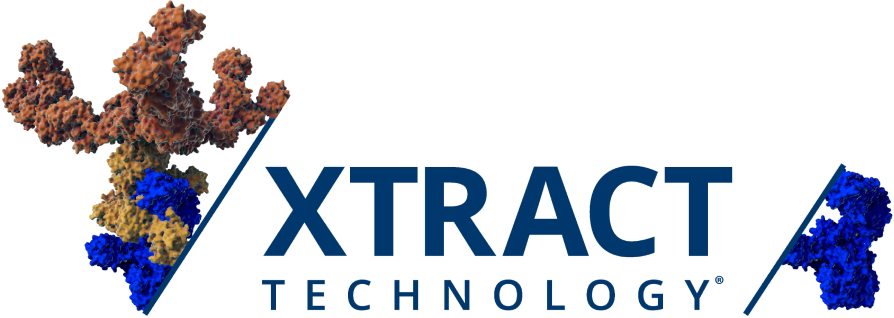
The active ingredient is purified by XTRACT Technology®, a state-of-the-art manufacturing process.
XEOMIN is uniquely purified to remove complexing proteins, leaving just the therapeutic component.

Patient
Savings Program
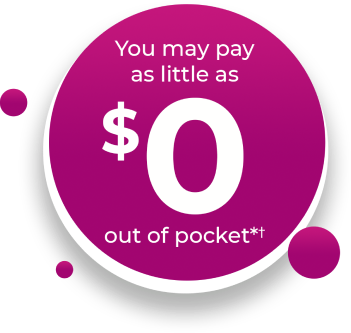
Visit MERZCONNECT.com for additional information to help you get started and stay on XEOMIN.
XEOMIN patient savings is available in just 3 easy steps.
Restrictions apply to eligibility. Commercial insurance required.
Reimbursement limited to out-of-pocket XEOMIN medication costs and related administration fees. State limitations may apply. Please see Full Terms and Conditions at MERZCONNECT.com. Merz reserves the right to change XEOMIN Patient Savings Program Terms and Conditions, including the eligibility requirements, at any time. This is not health insurance.
You may be required to pay upfront for your co-pay/co-insurance, as determined by your insurance coverage/policy and your healthcare provider’s co-pay collection practice.
Once you and your doctor have decided XEOMIN is right for you, MERZ CONNECT offers you savings and support to help you get started and stay on therapy.
Hear from real patients like you
Dona is an adult with blepharospasm treated with XEOMIN. See her story.



Hear from real patients like you
Dona is an adult with blepharospasm treated with XEOMIN


